-
15 results in Exploration of Targeted Anti-tumor TherapySort byLatest
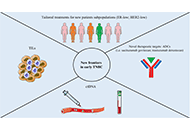 Early-stage triple negative breast cancer: the therapeutic role of immunotherapy and the prognostic value of pathological complete responseOpen AccessReviewTriple negative breast cancer (TNBC) represents an aggressive disease associated with a high risk of recurrence after curative treatment and a poor prognosis in the metastatic setting. Chemotherapy [...] Read more.Pierluigi De Santis ... Palma FedelePublished: February 28, 2024 Explor Target Antitumor Ther. 2024;5:232–250
Early-stage triple negative breast cancer: the therapeutic role of immunotherapy and the prognostic value of pathological complete responseOpen AccessReviewTriple negative breast cancer (TNBC) represents an aggressive disease associated with a high risk of recurrence after curative treatment and a poor prognosis in the metastatic setting. Chemotherapy [...] Read more.Pierluigi De Santis ... Palma FedelePublished: February 28, 2024 Explor Target Antitumor Ther. 2024;5:232–250
DOI: https://doi.org/10.37349/etat.2024.00215
This article belongs to the special issue Innovative Strategies to Target Triple-negative Breast Cancer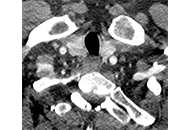 A case of immunotherapy-induced thyroiditisOpen AccessCase ReportImmunotherapy treatments for cancer are known to cause adverse thyroid events which present a diagnostic challenge to clinicians and radiologists. This case report highlights the importance of a hig [...] Read more.George Pears ... Joseph SaccoPublished: February 28, 2024 Explor Target Antitumor Ther. 2024;5:225–231
A case of immunotherapy-induced thyroiditisOpen AccessCase ReportImmunotherapy treatments for cancer are known to cause adverse thyroid events which present a diagnostic challenge to clinicians and radiologists. This case report highlights the importance of a hig [...] Read more.George Pears ... Joseph SaccoPublished: February 28, 2024 Explor Target Antitumor Ther. 2024;5:225–231
DOI: https://doi.org/10.37349/etat.2024.00214
This article belongs to the special issue Novel Strategies and Targets for Immunotherapy of Cancer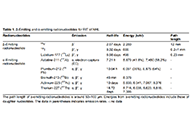 Recent preclinical and clinical advances in radioimmunotherapy for non-Hodgkin’s lymphomaOpen AccessReviewRadioimmunotherapy (RIT) is a therapy that combines a radioactive nucleotide with a monoclonal antibody (mAb). RIT enhances the therapeutic effect of mAb and reduces toxicity compared with conventio [...] Read more.Hiroki Goto ... Seiji OkadaPublished: February 28, 2024 Explor Target Antitumor Ther. 2024;5:208–224
Recent preclinical and clinical advances in radioimmunotherapy for non-Hodgkin’s lymphomaOpen AccessReviewRadioimmunotherapy (RIT) is a therapy that combines a radioactive nucleotide with a monoclonal antibody (mAb). RIT enhances the therapeutic effect of mAb and reduces toxicity compared with conventio [...] Read more.Hiroki Goto ... Seiji OkadaPublished: February 28, 2024 Explor Target Antitumor Ther. 2024;5:208–224
DOI: https://doi.org/10.37349/etat.2024.00213
This article belongs to the special issue Novel Strategies and Targets for Immunotherapy of Cancer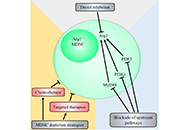 Novel therapeutic strategies targeting myeloid-derived suppressor cell immunosuppressive mechanisms for cancer treatmentOpen AccessReviewCancer is the leading cause of death globally superseded only by cardiovascular diseases, and novel strategies to overcome therapeutic resistance against existing cancer treatments are urgently requ [...] Read more.Eric Jou ... Fizza NasimPublished: February 28, 2024 Explor Target Antitumor Ther. 2024;5:187–207
Novel therapeutic strategies targeting myeloid-derived suppressor cell immunosuppressive mechanisms for cancer treatmentOpen AccessReviewCancer is the leading cause of death globally superseded only by cardiovascular diseases, and novel strategies to overcome therapeutic resistance against existing cancer treatments are urgently requ [...] Read more.Eric Jou ... Fizza NasimPublished: February 28, 2024 Explor Target Antitumor Ther. 2024;5:187–207
DOI: https://doi.org/10.37349/etat.2024.00212
This article belongs to the special issue Novel Strategies and Targets for Immunotherapy of Cancer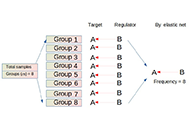 Conceptual breakthroughs of the long noncoding RNA functional system and its endogenous regulatory role in the cancerous regimeOpen AccessReviewLong noncoding RNAs (lncRNAs) derived from noncoding regions in the human genome were once regarded as junks with no biological significance, but recent studies have shown that these molecules are h [...] Read more.Anyou WangPublished: February 27, 2024 Explor Target Antitumor Ther. 2024;5:170–186
Conceptual breakthroughs of the long noncoding RNA functional system and its endogenous regulatory role in the cancerous regimeOpen AccessReviewLong noncoding RNAs (lncRNAs) derived from noncoding regions in the human genome were once regarded as junks with no biological significance, but recent studies have shown that these molecules are h [...] Read more.Anyou WangPublished: February 27, 2024 Explor Target Antitumor Ther. 2024;5:170–186
DOI: https://doi.org/10.37349/etat.2024.00211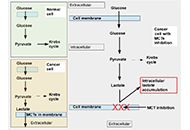 Exploring monocarboxylate transporter inhibition for cancer treatmentOpen AccessReviewCells are separated from the environment by a lipid bilayer membrane that is relatively impermeable to solutes. The transport of ions and small molecules across this membrane is an essential process [...] Read more.Tomas Koltai, Larry FliegelPublished: February 23, 2024 Explor Target Antitumor Ther. 2024;5:135–169
Exploring monocarboxylate transporter inhibition for cancer treatmentOpen AccessReviewCells are separated from the environment by a lipid bilayer membrane that is relatively impermeable to solutes. The transport of ions and small molecules across this membrane is an essential process [...] Read more.Tomas Koltai, Larry FliegelPublished: February 23, 2024 Explor Target Antitumor Ther. 2024;5:135–169
DOI: https://doi.org/10.37349/etat.2024.00210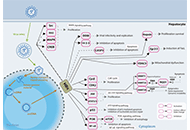 The oncogenic role of hepatitis B virus X gene in hepatocarcinogenesis: recent updatesOpen AccessReviewHepatocellular carcinoma (HCC) is the most prevalent form of primary liver cancers with high mortality rate. Among its various etiological factors, one of the major risk factors for HCC is a chronic [...] Read more.Agustiningsih Agustiningsih ... Caecilia SukowatiPublished: February 20, 2024 Explor Target Antitumor Ther. 2024;5:120–134
The oncogenic role of hepatitis B virus X gene in hepatocarcinogenesis: recent updatesOpen AccessReviewHepatocellular carcinoma (HCC) is the most prevalent form of primary liver cancers with high mortality rate. Among its various etiological factors, one of the major risk factors for HCC is a chronic [...] Read more.Agustiningsih Agustiningsih ... Caecilia SukowatiPublished: February 20, 2024 Explor Target Antitumor Ther. 2024;5:120–134
DOI: https://doi.org/10.37349/etat.2024.00209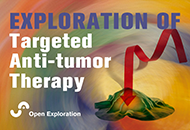 Exploring the function of myeloid cells in promoting metastasis in head and neck cancerOpen AccessMini ReviewHead and neck cancer (HNC) is a challenging disease that lacks effective treatment, particularly in the cases that spread locoregionally and metastasize distantly, dramatically reducing patient surv [...] Read more.Dakota Dike Dimegwu Okwuone ... Gregory N. GanPublished: February 19, 2024 Explor Target Antitumor Ther. 2024;5:108–119
Exploring the function of myeloid cells in promoting metastasis in head and neck cancerOpen AccessMini ReviewHead and neck cancer (HNC) is a challenging disease that lacks effective treatment, particularly in the cases that spread locoregionally and metastasize distantly, dramatically reducing patient surv [...] Read more.Dakota Dike Dimegwu Okwuone ... Gregory N. GanPublished: February 19, 2024 Explor Target Antitumor Ther. 2024;5:108–119
DOI: https://doi.org/10.37349/etat.2024.00208
This article belongs to the special issue Therapeutic Targeting of the Tumor Microenvironment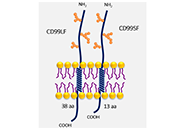 CD99 tumor associated antigen is a potential target for antibody therapy of T-cell acute lymphoblastic leukemiaOpen AccessReviewMonoclonal antibodies (mAbs) are an effective drug for targeted immunotherapy in several cancer types. However, so far, no antibody has been successfully developed for certain types of cancer, inclu [...] Read more.Kamonporn Kotemul ... Nuchjira TakheawPublished: February 19, 2024 Explor Target Antitumor Ther. 2024;5:96–107
CD99 tumor associated antigen is a potential target for antibody therapy of T-cell acute lymphoblastic leukemiaOpen AccessReviewMonoclonal antibodies (mAbs) are an effective drug for targeted immunotherapy in several cancer types. However, so far, no antibody has been successfully developed for certain types of cancer, inclu [...] Read more.Kamonporn Kotemul ... Nuchjira TakheawPublished: February 19, 2024 Explor Target Antitumor Ther. 2024;5:96–107
DOI: https://doi.org/10.37349/etat.2024.00207
This article belongs to the special issue Novel Strategies and Targets for Immunotherapy of Cancer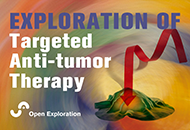 Management of stage III non-small-cell lung cancer: rays of hopeOpen AccessMini ReviewLung cancer remains the most common cause of cancer death across the world. Non-small-cell lung cancer (NSCLC) represents the most frequent type of lung cancer and is frequently diagnosed at an adva [...] Read more.Floryane Kim ... Alex FriedlaenderPublished: February 19, 2024 Explor Target Antitumor Ther. 2024;5:85–95
Management of stage III non-small-cell lung cancer: rays of hopeOpen AccessMini ReviewLung cancer remains the most common cause of cancer death across the world. Non-small-cell lung cancer (NSCLC) represents the most frequent type of lung cancer and is frequently diagnosed at an adva [...] Read more.Floryane Kim ... Alex FriedlaenderPublished: February 19, 2024 Explor Target Antitumor Ther. 2024;5:85–95
DOI: https://doi.org/10.37349/etat.2024.00206
This article belongs to the special issue Integrated Approaches for Non-Small-Cell Lung Cancer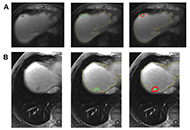 Quantitative peritumoral magnetic resonance imaging fingerprinting improves machine learning-based prediction of overall survival in colorectal cancerOpen AccessOriginal ArticleAim: To investigate magnetic resonance imaging (MRI)-based peritumoral texture features as prognostic indicators of survival in patients with colorectal liver metastasis (CRLM). Methods: Fr [...] Read more.Azadeh Tabari ... Dania DayePublished: February 19, 2024 Explor Target Antitumor Ther. 2024;5:74–84
Quantitative peritumoral magnetic resonance imaging fingerprinting improves machine learning-based prediction of overall survival in colorectal cancerOpen AccessOriginal ArticleAim: To investigate magnetic resonance imaging (MRI)-based peritumoral texture features as prognostic indicators of survival in patients with colorectal liver metastasis (CRLM). Methods: Fr [...] Read more.Azadeh Tabari ... Dania DayePublished: February 19, 2024 Explor Target Antitumor Ther. 2024;5:74–84
DOI: https://doi.org/10.37349/etat.2024.00205
This article belongs to the special issue Artificial Intelligence for Precision Oncology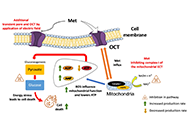 Efficacy of metformin and electrical pulses in breast cancer MDA-MB-231 cellsOpen AccessOriginal ArticleAim: Triple-negative breast cancer (TNBC) is a very aggressive subset of breast cancer, with limited treatment options, due to the lack of three commonly targeted receptors, which merits the need [...] Read more.Praveen Sahu ... Raji SundararajanPublished: February 19, 2024 Explor Target Antitumor Ther. 2024;5:54–73
Efficacy of metformin and electrical pulses in breast cancer MDA-MB-231 cellsOpen AccessOriginal ArticleAim: Triple-negative breast cancer (TNBC) is a very aggressive subset of breast cancer, with limited treatment options, due to the lack of three commonly targeted receptors, which merits the need [...] Read more.Praveen Sahu ... Raji SundararajanPublished: February 19, 2024 Explor Target Antitumor Ther. 2024;5:54–73
DOI: https://doi.org/10.37349/etat.2024.00204
This article belongs to the special issue Innovative Strategies to Target Triple-negative Breast Cancer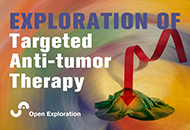 DNA methylation modulates epigenetic regulation in colorectal cancer diagnosis, prognosis and precision medicineOpen AccessReviewColorectal cancer (CRC) is a multifaceted disease influenced by the interplay of genetic and environmental factors. The clinical heterogeneity of CRC cannot be attributed exclusively to genetic dive [...] Read more.Jingxin Ye ... Weifeng DingPublished: January 28, 2024 Explor Target Antitumor Ther. 2024;5:34–53
DNA methylation modulates epigenetic regulation in colorectal cancer diagnosis, prognosis and precision medicineOpen AccessReviewColorectal cancer (CRC) is a multifaceted disease influenced by the interplay of genetic and environmental factors. The clinical heterogeneity of CRC cannot be attributed exclusively to genetic dive [...] Read more.Jingxin Ye ... Weifeng DingPublished: January 28, 2024 Explor Target Antitumor Ther. 2024;5:34–53
DOI: https://doi.org/10.37349/etat.2024.00203
This article belongs to the special issue Cancer Epigenetics: Implications for Novel Therapeutic Strategies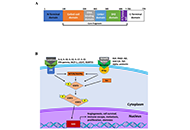 Role of STAT3 in pancreatic cancerOpen AccessReviewPancreatic cancer remains a serious and deadly disease, impacting people globally. There remain prominent gaps in the current understanding of the disease, specifically regarding the role of the sig [...] Read more.Zachary Hamel ... Shrikant AnantPublished: January 17, 2024 Explor Target Antitumor Ther. 2024;5:20–33
Role of STAT3 in pancreatic cancerOpen AccessReviewPancreatic cancer remains a serious and deadly disease, impacting people globally. There remain prominent gaps in the current understanding of the disease, specifically regarding the role of the sig [...] Read more.Zachary Hamel ... Shrikant AnantPublished: January 17, 2024 Explor Target Antitumor Ther. 2024;5:20–33
DOI: https://doi.org/10.37349/etat.2024.00202
This article belongs to the special issue Therapeutic Targeting of the Tumor Microenvironment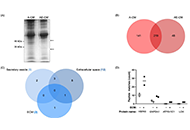 Identification of lysyl oxidase as an adipocyte-secreted mediator that promotes a partial mesenchymal-to-epithelial transition in MDA-MB-231 cellsOpen AccessOriginal ArticleAim: Breast cancer (BC) is the most common cancer in women worldwide, where adiposity has been linked to BC morbidity. In general, obese premenopausal women diagnosed with triple-negative BC (TNB [...] Read more.Cassidy M. Van Stiphout ... Alicia M. Viloria-PetitPublished: January 16, 2024 Explor Target Antitumor Ther. 2024;5:1–19
Identification of lysyl oxidase as an adipocyte-secreted mediator that promotes a partial mesenchymal-to-epithelial transition in MDA-MB-231 cellsOpen AccessOriginal ArticleAim: Breast cancer (BC) is the most common cancer in women worldwide, where adiposity has been linked to BC morbidity. In general, obese premenopausal women diagnosed with triple-negative BC (TNB [...] Read more.Cassidy M. Van Stiphout ... Alicia M. Viloria-PetitPublished: January 16, 2024 Explor Target Antitumor Ther. 2024;5:1–19
DOI: https://doi.org/10.37349/etat.2024.00201
This article belongs to the special issue Innovative Strategies to Target Triple-negative Breast Cancer -